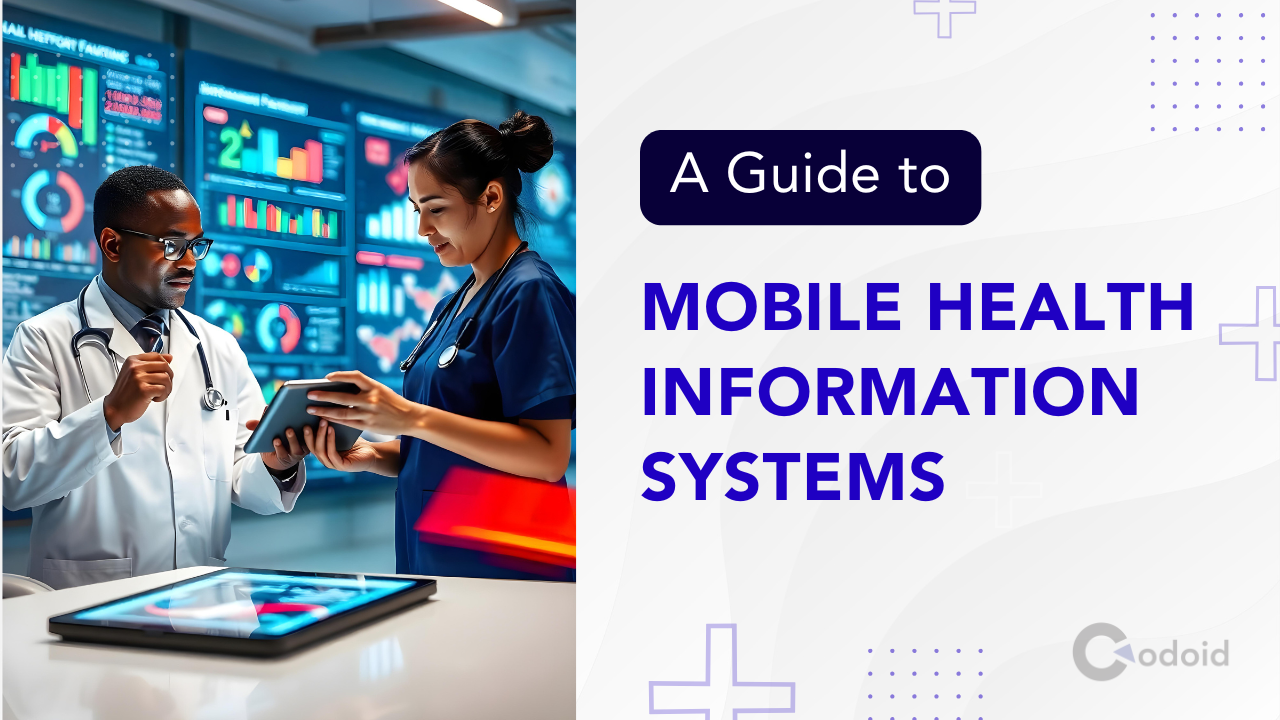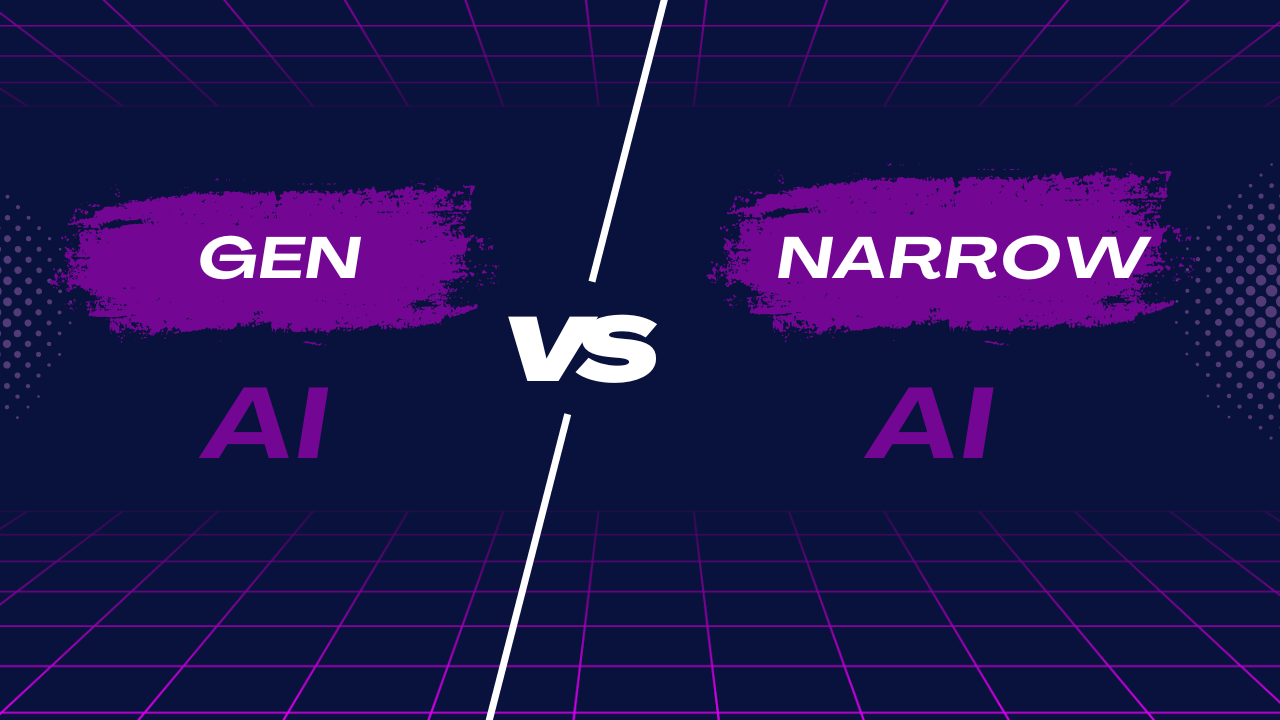
by admin | Sep 9, 2020 | E-Learning Testing, Fixed, Blog, Top Picks |
Education is essential, and it should be open to everybody. As innovation pushes ahead, individuals are attempting to build the right platform for online training. During offline training sessions, you can visually connect with educators. It’s getting simpler to convey, pose inquiries, and collaborate, and so on. With a pandemic in its full rage, employers are increasingly opting for online channels. It appears to be that eLearning platforms attempt their best to give quality learning experience. Yet, it seems something is deficient in an informative online session. Consequently, there is still space for advancements in eLearning apps.
E-learning testing is essential and could be done quickly by yourself or using E-learning testing services. Regardless of whether you have spent endless hours building up every segment, it’s consistently advantageous to give it a careful tweak before you roll it out for your employees or students. Here are 14 things to double-check before launching your e-Learning course.
1. Incorporation of Learning Objectives and Goals
It’s smart to go over your whole eLearning course and ask yourself whether each component you’ve included, from the content to the illustrations, serves your learning objectives and goals. Everything ought to be meaningful. It must help your students in grasping the topic, instead of diverting them from the eLearning experience.
2. Each learning Unit is Independent
Each learning unit you’ve made (which is an exercise or module that can uphold its learning objectives and goals) should provide your students with insights towards a given theme. Along these lines, ensure that your learning units’ entirety is independent and that they fit into the master plan of your general eLearning course.
3. Syntax, Punctuation, and Spelling
Triple check your eLearning course to guarantee that your commas, periods, and marks are in their legitimate spot. Additionally, check the spelling of each text as even those that are important for a video or a picture, to ensure that everything is right on target. Keep in mind, spelling and language errors may appear to be unimportant, but have the potential to decrease the general nature of your eLearning course by causing it to appear to be less tenable and composed.
4. Brand Joining
Is your eLearning course in-accordance with the brand picture of your customer or your eLearning firm? Is it intelligent of the topic you’re attempting to make, and does each segment help create a powerful and vital learning condition for your audience? Answer these questions for yourself before proceeding further.
5. Course Diagram/Progress Markers
Are your students ready to keep tabs on their development while partaking in the eLearning course? Incorporated markers that they can use to rapidly and advantageously perceive how far they’ve come, what subject they’ve discovered, and what different exercises they will explore soon. It will give them that additional increase in inspiration and will push them to work more.
6. Correct and Clear Navigation
The route of your eLearning course ought to be as transparent as it could reasonably be expected. It should incorporate forward and in reverse route symbols, a home catch, and a connection to take students to the eLearning course diagram screen. Additionally, ensure that each button is dynamic and show up in a similar spot on each page to dodge confusion.
7. Valuable Content
Each bit of content should reflect practical applications and the necessity of the topic. If not, your students won’t see the genuine benefit of finishing the eLearning course and, like this, are not prone to participate in the learning cycle.
8. Constructive Feedback
When students complete a branching situation, recreation, or appraisal, would you say you are furnishing them with viable criticism so that they are benefitting from their experience? In a perfect world, your students need to be assessed consistently so that they can learn from their mistakes. Guarantee that you are utilizing efficient criticism tools and strategies to give your students the help they need.
9. All Programs must uphold Media (videos, images, and audios) Components
Students will be getting to your eLearning seminar on a wide range of devices. It is why it’s essential to confirm that your multimedia components can be seen on an assortment of devices. Are your sound and video advanced for web seeing? Will they, despite everything, be successful learning apparatuses on the off chance that they are seen on various devices?
10. Links are Dynamic and Vital
Double-check that your links’ entirety is dynamic and that they will show up in another popup window. It can be undertaken after you’ve launched the eLearning course to ensure that all the links are still dynamic.
11. Is it Mobile-Friendly?
View your eLearning seminar on various sorts of cell phones, if conceivable, to confirm that you can get to the content entirely. Likewise, guarantee that it, despite everything, your application holds its responsiveness and tasteful intrigue when it’s seen on a little screen.
12. Comprehensive Assessments
Have you made exams, tests, and quizzes that are genuinely going to ascertain student intellect? Have you utilized the correct inquiry design (numerous decision, valid or bogus, etc.) in light of the topic? Do your inquiries offer the perfect measure of a challenge for your students, or would they say they are excessively difficult or easy? Therefore, while gauging your students’ comprehension, ensure that you keep the questions mentioned above in mind.
13. Lesson Synopses
Make sure to incorporate recaps or synopses toward the end of every module. Also include brief outlines toward the start, with the goal that your students know about the essential thoughts or standards they will gain from every exercise.
14. E-learning Course Testing after the Launch
Once your course is delivered, it is essential to verify the working by genuine clients. Have them test the application and give their criticism. It will permit you to distinguish any errors or features that would require improvement.
To Wrap
Utilize this list to remember everything to double-check before launching your eLearning course, to guarantee that your eLearning course is holistic and perfect. Keep in mind that while this cycle may require time and exertion, it will spare you the cerebral pain of rolling out these essential improvements after the course’s launch.

by admin | Jan 6, 2020 | E-Learning Testing, Fixed, Blog |
Globally there are innumerable learning management systems available for use. It could be tough for a business to decide which LMS would suit them best. The LMS should help a business deliver corporate learning, scale up training efforts, and consistently achieve the learning goals for your company. It would be important to elicit the help of an expert QA outsourcing and software testing firm with proficiency in elearning testing services. They would be able to let the business know and take top factors into consideration when helping the business choose a Learning Management System.
Usability of a system should be a critical factor in the process of evaluation when looking to adopt an LMS system. It must be extremely easy for users / employees to navigate through the learning courses and receive scores and certifications. The LMS introduction must be in-depth, all-inclusive and be customizable to suit individual needs, and have simple guides to help with easy acceptance.
It is important for a company to know whether employees are making any progress in an assigned course. A proper tracking and reporting mechanism is an indispensable part of a good learning management system. Reporting capabilities are amongst the essential factors for selecting an LMS system for a business. Event tracking and real-time participation are accurate measures for whether a course is working as it should and whether employees are actually undertaking the courses they are required to complete. External training programs attended by employees should also be tracked, since every training program does have an effect on the performance of the employees. It should also be easy for employees to be able to print their certification of completion instantly.
The purpose of an LMS is to serve a particular function of the business. The LMS must be scalable and comprehensive enough to grow along with the business. This is an important factor which many managers/business leaders often forget to take into consideration, and it becomes a problem when the system is unable to meet their expectations and the demands of the business. An expert partner in the E-learning domain testing will be able to assess and verify the system for your business.
The premise of an e-learning system is that it allows users to learn at their own pace, in a location best suited to their learning needs, and at a time that is convenient to them. The LMS should be accessible and allow 24/7 flexibility all through the year. By ensuring that the LMS has these capabilities, your employees would be encouraged to complete their assigned courses and not miss out on their work schedules either. Since an LMS is web-based, it can also be accessed from any mobile device, but a business must ensure that the system works seamlessly across all platforms and devices. This requires the support of an expert partner who would be able to ensure that the LMS works as designed at all times and flawlessly.
If the LMS is expected to work round the clock, the software testing partner must also have around the clock availability and offer top class service at any time of day or night. The online vendor support must be functional and easily accessible, and should efficiently answer any questions that users may have when operating the system. Your outsourcing partner must have a reputation of robust customer service around the clock.
The data being entered into the LMS is online and this immediately raises concerns of privacy and security. The LMS would hold personal information such as address, email ids, phone and social security numbers, and other confidential data. The vendor managing the LMS must ensure privacy controls are in place, the automatic backup system functions smoothly, and each person has a password protected login. This will keep company and employee records safe from unwarranted access and users.
This is not an exhaustive list but these are amongst the main considerations for a robust learning management system. In addition, the LMS must have a provision for communicative work, discussion boards, and inter-user ‘conversations’. There should be a provision to exchange files and have group discussions and note-taking as well. For such a system to work well it would need constant support and management through a highly proficient and experienced team – connect with us to work with such a team and gain optimum advantage from your Learning Management System, now and in the future.

by admin | Oct 10, 2019 | E-Learning Testing, Fixed, Blog |
E-learning localization is all about modifying a product to suit a specific culture, language, and is an effort directed and adapting the “look-and-feel” to match a locale. E-learning localization is the approach of translating e-learning content to match the location in which the maximum target audience would be located. The idea is to reach the entire geographical spread of the target audience, and through E-learning localization, the possibility of engaging with a local audience is a lot higher. Despite all the advantages associated with e-learning localization, it is not an easy task, except for an expert. We at Codoid have been providing top-class e-learning localization services and have a large number of happy clients to our credit.
Why Work with an Expert for e-learning localization? Enterprises are expanding and branching out globally and there is also a rise in immigrant communities across locations. These factors necessitate that companies remain aware of the need to make websites and content that is inclusive, which further adds to the need for localizing training content, and e-learning testing plays a decisive role. E-learning domain testing is important to ensure that content localization does not cause any defects or hitches in the smooth working of the content for users across the globe. The demand for globalization means that companies must comply by ensuring their e-learning content is accessible and understandable to suit the needs of the target audience based on location.
As experts in this realm, we endorse the view that localization must never be afforded secondary status but must be part of the development phase of e-learning content. This is so because localizing content transcends the mere translation and or integration of the audio to a different language. Preparing e-learning content for global consumption is definitely no mean task, and there are several aspects to be kept in mind to ensure that localization hits the mark and is a smooth process.

Tips for Enhanced Localization of E-Learning ContentAs an ELearning Testing Company, we know and understand the many benefits that localization in eLearning brings. The two most important benefits are being able to reach employees and a specified target audience across countries in the language they understand and would be at ease when learning the courses. Through localization, a business would gain access to a broader audience and wider market – those that might not have been accessed so far.
Our experts offer some relevant and important tips to accelerate and enhance localization in e-learning content:
Make localization a part of the design phase – This is important since translations can expand the content by up to 30%, and it is necessary to ensure flexibility in design to accommodate these changes. The onscreen content and videos too must be taken into consideration – localization would be a lot simpler and effective when incorporated in the design stage.
Incorporate the Best Practice of Single Worldwide Binary – This is the technical theory of the language-neutral model of testing any localized technology-based training programs. By using this model one of the major issues associated with localization testing can be done away with – that is, to create distinct versions of the source code for each language for the target audiences in varying locations. Through this method, the core functionality of the e-learning material, including support for individual languages and globalization, would require only one round of testing. This in turn is a great way to save time and is highly cost-effective too. As experts in the realm of software testing, we affirm that time and cost savings can prove to be game-changers.
Share All Source Materials with the Software Localization Partner – It is important to view your e-learning testing vendor as your partner in success. By providing a complete set of files, storyboard information, and every workflow process, your vendor partner would be able to present you with proper costs, fixed timelines, and resource requirement details. This is beneficial for a business since it eliminates ambiguities and any unpleasant surprises – irrespective of the industry within which the business operates.
Easy to Adapt and Translate Content – The fact is that words, colors, and even images have different connotations in various countries and regions. If neutral content is not a possibility, there must be enough flexibility to ensure that all these features can be adapted in a manner that would be culturally and by way of language, suitable for the target audience.
Use pseudo-localization – This is a test run within the website or application to ascertain whether the content in the target audience language is being displayed properly. Additionally, this will enable thorough checking of whether there are any issues with contractions and expansions and character encoding in the pages.
Finalize Course-Source Version First – As experts, we know that launching localization through several languages must never happen prior to finalizing the source version of the course. Course content should be properly developed, tested, and finalized in the main language such that any bugs would be restricted to a single language, rather than dealing with the same problem multiple times.
Important to Automate GUI test – Automation testing software is extremely useful for testing GUI components in any language and this significantly reduces the cost of GUI testing while elevating the efficiency of localization. As experts we recommend the use of contemporary cloud-based automation testing tools since they are scalable and well-suited for agile projects, eliminating the need for a full-fledged in-house IT infrastructure for a business.
Combine Recurring Elements – Elements/components such as next or back buttons should be part of the page template such that localization is a one-time activity for these elements. This cuts down on turnaround time while reducing effort on desktop publishing since the elements would function properly across the module in several languages.
Managing Audio Considerations – Localization would be incomplete without taking into account both text and lip-synch VO and developing a complete and meticulous pronunciation guide with the translation terminology. It is necessary to make a final assessment, smoothen out changes and ensure that the voice-over script is adjusted as per the language before the final approval and recording. As experts, we highly recommend this process since we know it saves costs and time-consuming retakes.
Partnering with an Experienced Partner – Despite all the tips provided, there are no absolutes, and issues are bound to crop up. As an experienced and expert partner, we will manage every part and step of the project, taking out the guesswork of the critical localization projects. In addition, our team will provide guidance on how to elevate organizational workflow and help your business to manage cultural issues such that the brand image and goals of your business remain at the fore.
In Conclusion
When e-learning was fairly new, creating top-quality content alone was an onerous, manual, and lengthy process, and hence localization was an insurmountable task. However, now with automation, tools, and several strategies localization of e-learning is a lot simpler. We at Codoid are your go-to partner to ensure that you reach the global audience without ‘any loss in translation’. Connect with us to stay ahead of the crowd.

by admin | Oct 15, 2019 | E-Learning Testing, Fixed, Blog |
It is not surprising to see businesses rush through final reviews and the QA cycles for their E-learning course material once it reaches the end of the development cycle – getting it published speedily becomes paramount. However, as experts of E-learning Testing, we can guarantee that this approach will result in shoddy and below-average content. We recommend and undertake user acceptance testing for E-learning content to ensure high quality and functionality – our team consists of experts in Elearning domain testing and the broader realm of software testing. We put forth some top tips on conducting User Acceptance testing for E-learning.
Form a team consisting of diverse combination of testers
This is an important aspect for user acceptance testing – the testers must be from a diverse mix including age, sex, background, and other factors. The best team would be one that would mirror the diversity of the target audience – it would be a lot easier for such a team to understand the diverse set of audiences. People experience and use content in different ways, and it would be simpler for a diverse mix of testers to learn from watching how different people connect with and use the course material.

Allow Testers to Assess how to Use the Course being TestedA brief outline and context about what they need to do would suffice. They should receive only as much information as the average user who would use the course once finalized. This is to ensure that the testers explore the course in-depth and interact with it as they deem appropriate. Testers would be able to identify faster which components and areas of a course need more work, which ones could be enhanced or removed, and which ones work the best. Post successful completion of the course, the next step in user acceptance testing is interrogation and listing out questions for the tester. The answers provided by the tester will help understand the problems, uncover defects, and put forth simple solutions to enhance the UI of the E-learning course.
Ask Testers to Provide Inputs for ImprovementEspecially when working with experts, businesses tend to feel the need to justify their decisions with regard to components and design of the course. This is not required – instead, it is important to gain feedback and suggestions for improvement on the course design.
Implementing UA Test CasesIt is now the job of the testers to implement the test cases designed for the User Acceptance Testing. They must also conduct some additional random but relevant tests.
Uncovering and Documenting DefectsAny defects / bugs recorded during User Acceptance testing must be suitably recorded in a well-drafted document. The testers must provide their comments and observations for evaluation and closure of the defects.
Solving the DefectsThis is a crucial stage within UAT – resolving bugs would be amongst the final adjustments that the testing team would make to the course. Once this is done, testers would be able to finalize the acceptance of the E-learning course – meaning that it meets the requirements of the users and can now be deployed accordingly.
In Conclusion:
Within the realm of E-learning, User Acceptance Testing essays a central role – validates that the course functions in the manner that meets the expectations and needs of the users. For businesses, it is necessary to indicate to the users what they can expect from the course rather than keeping them guessing – this is where UAT is critical. To ensure that your users receive exactly what they want and expect, partner with an expert E-learning Testing Company – connect with us for UAT and a lot more within the realm of software testing.

by admin | Oct 24, 2019 | E-Learning Testing, Fixed, Blog |
The Flash phase-out is fast approaching and hence it has become imperative to migrate all E-learning courses from Flash to HTML5. We as experts in the realm of E-Learning App Testing (and more) corroborate that doing so is the top solution to save huge costs on restructuring existing courses or recreating them, while also conquering the incompatibility issue of devices and browsers of Flash Courses.
To avoid these unnecessary costs and delays due to rework, it is critical for companies to find the most suitable and economical ways to ‘convert/migrate’. Partnering with E-Learning Domain Testing experts will ensure that not only are you able to migrate E-Learning Courses from Flash to HTML5 economically but also do so faster than your competitors – we bring you some top tips. You need an expert since this is no mean task, especially if the E-learning courses are extensive and contain a large number of interactive elements. A trusted and experienced partner will ensure that this process is seamless, smooth, and not at all overwhelming for your business.

Identify and put together an ‘inventory’ of the E-learning courses to be migrated – this may seem obvious, but it is necessary to prepare a proper list of the Flash-based courses ‘qualifying’ for migration. This would mean courses that have the same levels of interactivity and were developed using the same scripting tool. Once this is in place, it would be easy to select the most appropriate conversion strategy.
The HTML5 courses must be simpler and shorter – Fewer bytes will ensure that download is faster, and would further ensure that the courses are easily accessible and user friendly even on mobile devices. Hence, while the HTML5 courses should have all the learning essentials, the data and elements must be as low as possible. Thorough scrutiny of the content would be necessary to differentiate between the necessary content and what could be rendered obsolete.
Deploying the Right Tools – As mentioned the scripting/authoring tools are extremely important, and hence it is necessary that there is a clear idea of which tools should be used and how best they can be used. The migration of all the E-learning courses from Flash to HTML5 could be extremely cumbersome and time-intensive if the right scripting/authoring tools are not used or used incorrectly. Courses with a high intensity of interactive and multimedia elements in the instructional design can be especially problematic to migrate without the proper authoring tool.
‘Rebuild’ Courses to Ensure Compatibility across Platforms – ‘Rebuild’ is a conversion methodology to redevelop obsolete software with a new authoring tool. This methodology ensures the proper output of HTML5, functionality without errors, and enables the optimal usage of the latest aspects of scripting tools. This in turn facilitates access across multi-devices and platforms.
‘Redesign’ to Integrate New Learning Approaches – If course content has a large number of interactive elements there are no source files or the course needs updating from an instructional design or content perspective, it is useful to use the ‘redesign’ methodology. This methodology also helps to integrate contemporary learning strategies such as micro and social learning, and many more. Microlearning includes resources such as PDFs, videos, info-graphics, and others, while social learning includes methods such as user-generated videos, podcasts, social media platforms, discussion boards online, and others.
In Conclusion
While this is not an exhaustive list of tips to migrate E-Learning Courses from Flash to HTML5 economically, it certainly is indicative of what is required. As experts in the E learning testing domain, we know that HTML5 is becoming the ultimate design solution, and we are ready to help your business make a smooth transition. Through the ‘migration’ E-learning experiences are elevated and ensure that the content is future-ready, scalable, and extremely versatile. In addition, it ensures that the E-learning content is mobile-friendly for the new-gen learners.
To ensure a swift and smooth conversion, connect with us to work with a qualified team with years of experience in this realm. Our experience in working on these projects has ensured that we remain aware of the challenges and possible obstructions, and the best ways to tackle them.

by admin | Aug 22, 2019 | E-Learning Testing, Fixed, Blog |
Online training and the e-learning industry have evolved to keep pace with the digital age. Popular e-learning programs and packages must undergo rigorous testing to prove their mettle for the demanding digital audiences and highly competitive market. Therefore, test engineers working in e-learning domain testing must perform quality assurance testing, acceptance testing, and deploy engagement analytics to test and improve online training modules. These forms of elearning testing ensure that users gain access to a value-driven product, with a seamless user experience.

Quality Assurance Testing
Software testers working for an elearning testing company would need to test the product for content and functionality. Content represents the core of elearning mechanisms, which makes it critical for testers to check the content acceptability against the style guide. Quality assurance also extends to testing the functional aspects of an elearning package. Hence, elearning testing engineers would need to check if a product functions seamlessly with multiple browsers, on multiple devices, and its ability to endure usage of multiple users with simultaneous access. Elearning packages positioned in remote servers must endure heavy digital traffic – this is an important aspect of quality assurance testing.
Acceptance Testing
A software testing team conducts acceptance tests to determine whether a software package or application matches business requirements and end-user needs. The different aspects of the interaction of actual users with an elearning package are tested in acceptance testing exercises. An elearning testing engineer, for instance, may wish to determine whether an e-learning module conforms to the requirements originally set out in the specification phase. In essence, acceptance testing seeks to determine how an e-learning course works in the real world and also, whether it retains the integrity to support a valid learning experience. Further, engineers may wish to test the navigation functions embedded in an elearning package, the incidence of any technical issues in the course of normal use, and other aspects.
Engagement Analytics
A core aim of elearning domain testing is to assess or examine the usage of a product in the online domain. Testing the metrics of user engagement can reveal several details that could serve to enhance the learning experience for end-users. Typically, a test engineer working with an e-learning testing company can probe the amount of time users spend on a certain page or section of a package, the time required by an average user to complete an elearning course, user locations, the types of devices used to access an e-learning module, and more. A close analysis of these metrics can empower package designers to drive higher levels of engagement with end-users.
Key Ideas and Concepts
Information overload can mar an e-learning experience for end-users. Therefore, elearning testing engineers must test such packages for their ability to present key ideas and concepts succinctly. This represents a form of functional testing that could potentially attract new audiences and enhance the appeal of a product in e-learning aftermarkets. The testing should help create a test that centers on key ideas and concepts so that learners can direct their attention and concentrate on the necessary information as part of their online training experience.
In Conclusion
Test engineers that specialize in elearning domain testing can effect significant improvements in the quality of elearning courses, applications, and packages. The notations, findings, and feedback from such testing can raise the levels of quality and functionality for online training programs. To gain a competitive advantage and enhance the quality of online training provided by your company, connect with us and of course for all your software testing needs.

































